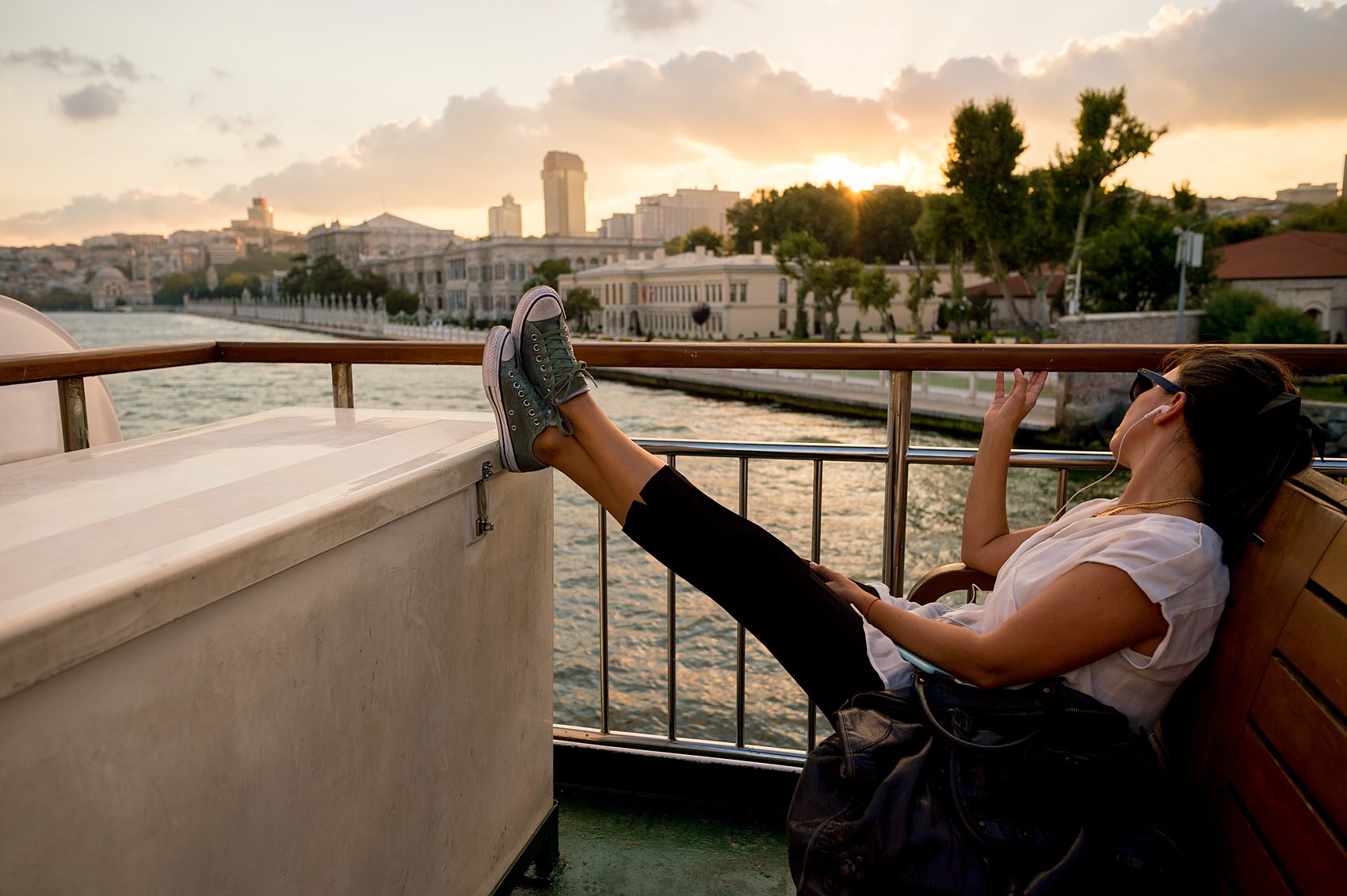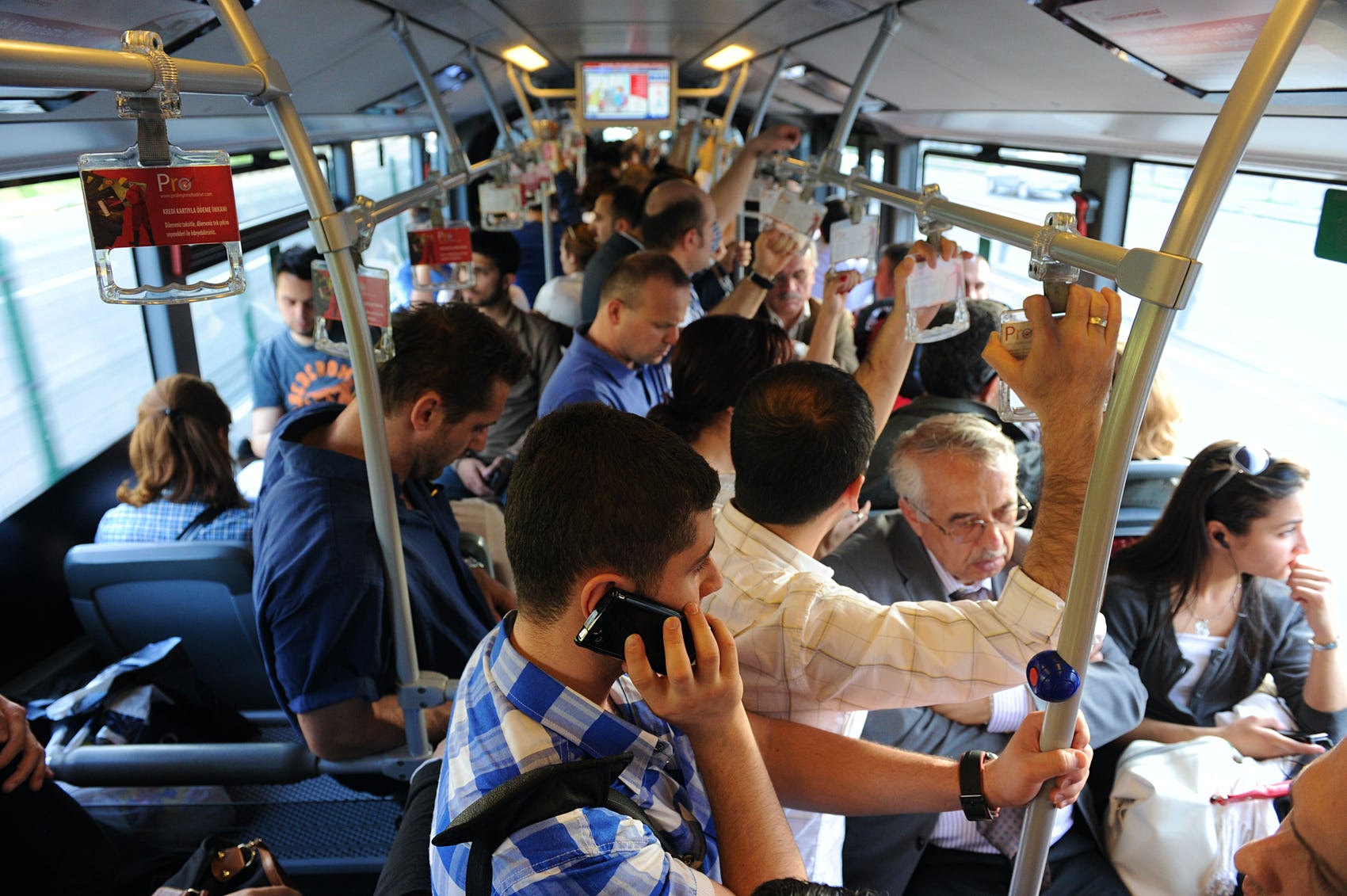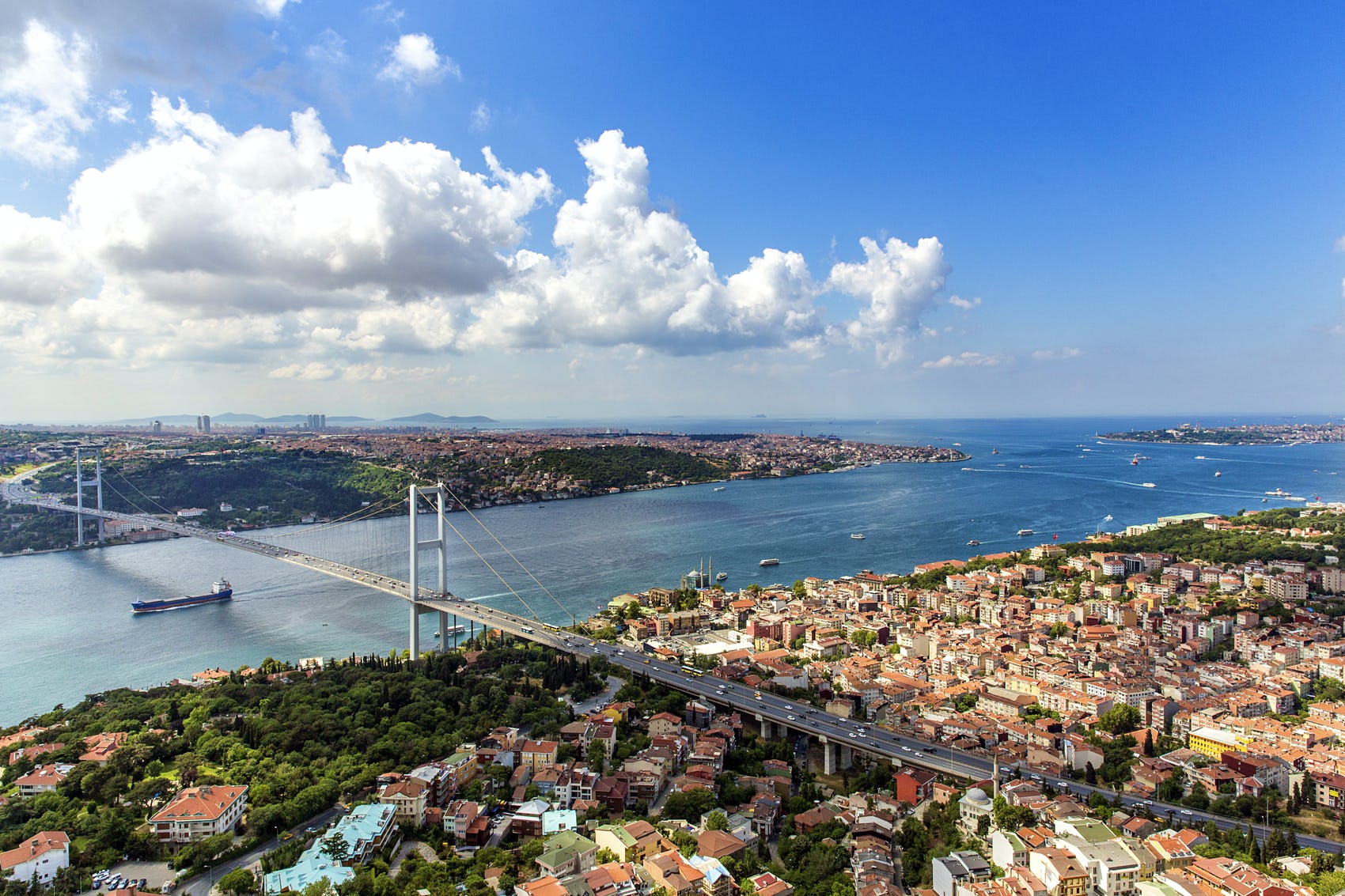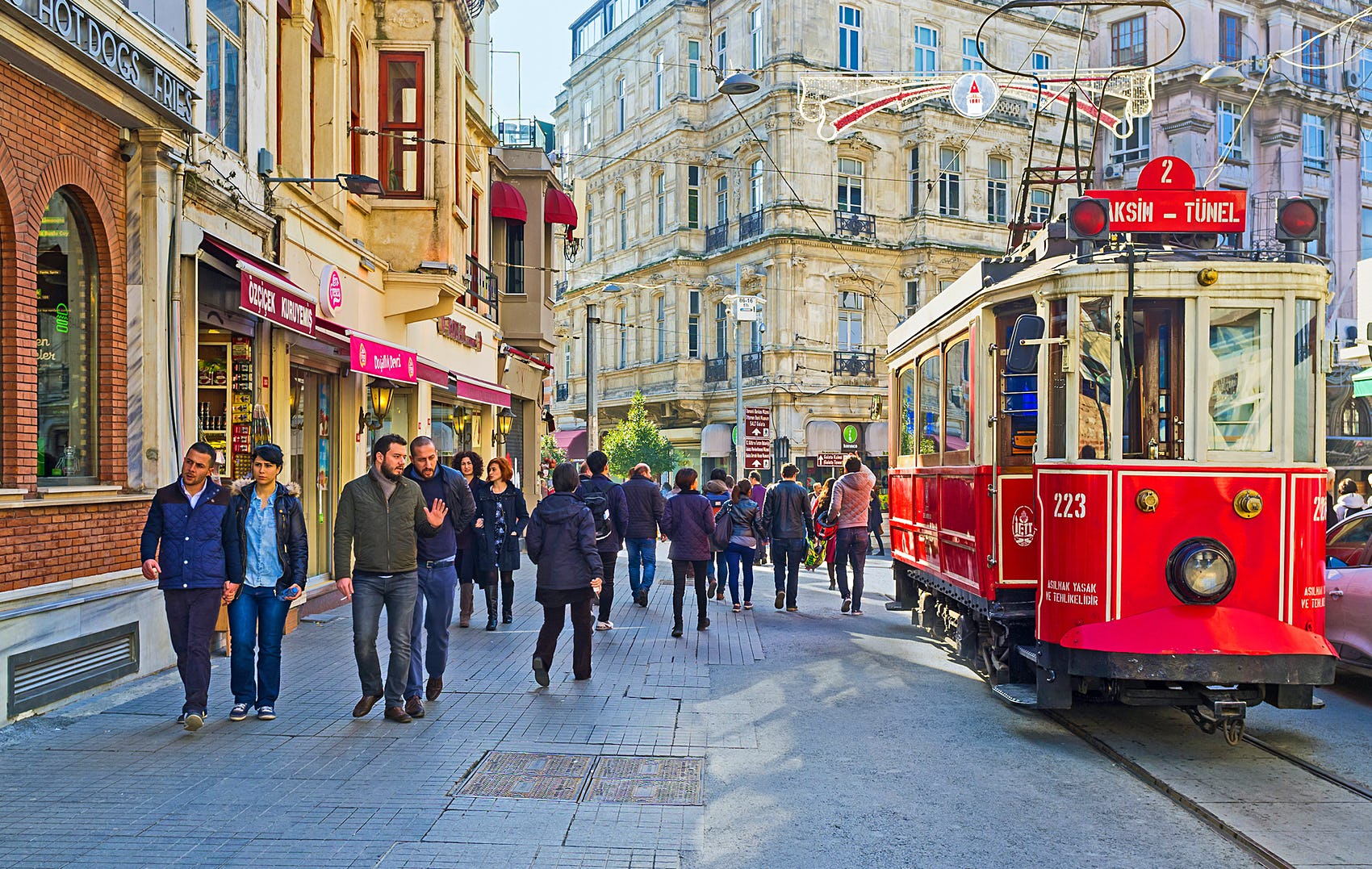Istanbul, which covers an area of more than 2,000 square miles and has a population of up to 15 million, is huge – and often in traffic jams. But this metropolis also crosses a large number of fairly well-integrated transport systems.
Even better news for tourists is that most of the main attractions, historic districts and other key sites are located in a relatively compact central area of the city, which can be reached on foot and by tram, subway or ferry, and they are all easy to use.
Tram, cable car and cable car
Of Istanbul’s four modern tram lines, the most useful for tourists is the T1 line, which starts at the Kabatash Ferry Terminal and crosses the Galata Bridge and past the Sultanahmet landmark. There is also a tram (T5) along the Golden Horn, which stops in the colorful quarters of Fener, Balat and Eyup, and a tram (T3), which passes through the Kadika district on the Asian side of Istanbul. Two funiculars, one between Karakei and Tunel Square and the other between Kabatash and Taksim Square, connect the T1 tram with the pedestrian shopping and entertainment area around Istiklal Caddesi, depriving it of a steep climb. From the Eyup stop of the T1 tram, the cable car goes up to the popular Pier Loti Café and observation deck.
Metro and Marmarai
The ever-expanding Istanbul metro line stretches for more than 80 miles, connecting new areas of the city as it grows. Most tourists will probably not have to use any lines except the M2 between Hadjiosman and Yenikapa, which runs through the business and shopping areas around Levent, Taksim Square and Shishani in Beyoglu, and the Golden Horn. A separate underground railway system, the Marmarai, connects with the metro to Yenikapa and runs under the Bosphorus in a tunnel to the Asian side.

Ferry
Stunning views make a trip on one of Istanbul’s ferries an independent tourist attraction. Ferries regularly cross the Bosphorus between Eminöné, Karakei, Kabatash and Besiktas on the European side and Kadika and Uskudar on the Asian side. Ferries also run approximately every hour along the Golden Horn, every few hours to the Princes’ Islands and periodically up and down the Bosphorus.
Dolmush and minibus
According to its name, which means “filled” in Turkish, this type of public transport is sent on the road only after it is filled with passengers. In Istanbul, a dolmus is a yellow minibus with several rows of seats that runs back and forth between two destinations. It is convenient to get from Taksim Square to Besiktas or Kadikey, when ferries stop running late in the evening.
Minibuses usually run longer routes and follow a set schedule. On the windshield of both modes of transport usually hangs a sign indicating the destination. Minibuses pick up and drop off passengers at certain stops along the way, and dolmus passengers tell the driver where they want to get off. Another important difference is that the dolmus driver takes only cash for the trip, not an Istanbul card or token. If you’re riding a dolmus, don’t be surprised if the people behind you hand you a few Turkish lira – you’re expected to hand them over to the driver and return the delivery.

Bus
The city is covered by a network of bus routes, but it can be difficult for visitors to figure out which one is going where they need it. The tunnel under Taksim Square and parking in Eminen near the ferry docks are the two main central hubs for buses. And, of course, buses are prone to the infamous Istanbul traffic. Six metro lines operate on their own columns, but mainly serve remote residential and business areas.
Taxi
Istanbul taxi drivers have a bad reputation: they try to set a fare, refuse to pick up passengers and behave differently, especially when it comes to foreign guests. It is best to call a taxi at the counter or hotel, as well as using programs such as Uber or BiTaksi. Taxi drivers are vehemently protesting against Uber, and as a result they use only ordinary yellow or turquoise taxis.
Car
Given the heavy traffic in Istanbul, aggressive drivers and perpetual construction, it is better not to use a car to travel around the city. If you do need a car for long-distance excursions, most major international rental agencies have offices in Taksim Square.
Bicycle and scooter
Bicycles are rarely used in Istanbul as a daily means of transport, and given the lack of cycle paths and drivers’ awareness of cyclists, they are not recommended as a means of transportation. However, there are also pleasant places to walk, especially along the Bosphorus and on the shores of the Sea of Marmara on both the European and Asian sides of the city. The İSBİKE municipal bicycle rental system, which is based on the application, has stations on all these coasts. The Princes’ Islands are also a popular place for cycling. Marti electric scooters are also becoming more common.

Istanbul Card (Istanbul Card)
The replenished Istanbulkart can be used in all types of public transport and gives a 30% discount on travel, as well as the convenience associated with the absence of the need to purchase separate tickets, which makes the purchase of such a card a hassle. Tickets are sold in yellow and blue vending machines at many (but not all) metro and tram stops – look for “Biletmatik”. One card costs 13TL without credit. The loan can be replenished in the same machines. There is also a website and a program, but they can be difficult to navigate for people who do not speak Turkish.
Tips for using Istanbulkart: You can also use your Istanbulkart credit to pay 1TL for using many of the city’s public restrooms.
Transport is available in Istanbul
Istanbul presents certain difficulties for travelers with disabilities. Metro, tram and ferry lines are quite accessible, but travelers may encounter unexpected stairs, gaps or elevators that do not work, as well as other obstacles.
Switching from one mode of transport to another is also not always smooth. Buses are often crowded, although some have elevators and wheelchair spaces. Some sidewalks have tactile pavements and audible signals at crossings, but an urban obstacle course consisting of uneven pavement, crowds of pedestrians, poorly marked buildings, and street seats, vendors, advertisements, and shops can be difficult to navigate even for those who has no problems moving.

